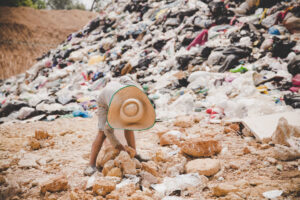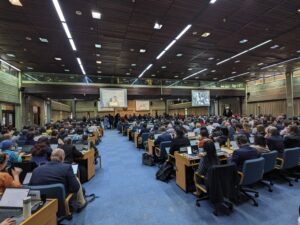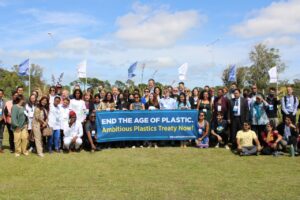
A Danish fiasco: the Copenhagen incineration plant
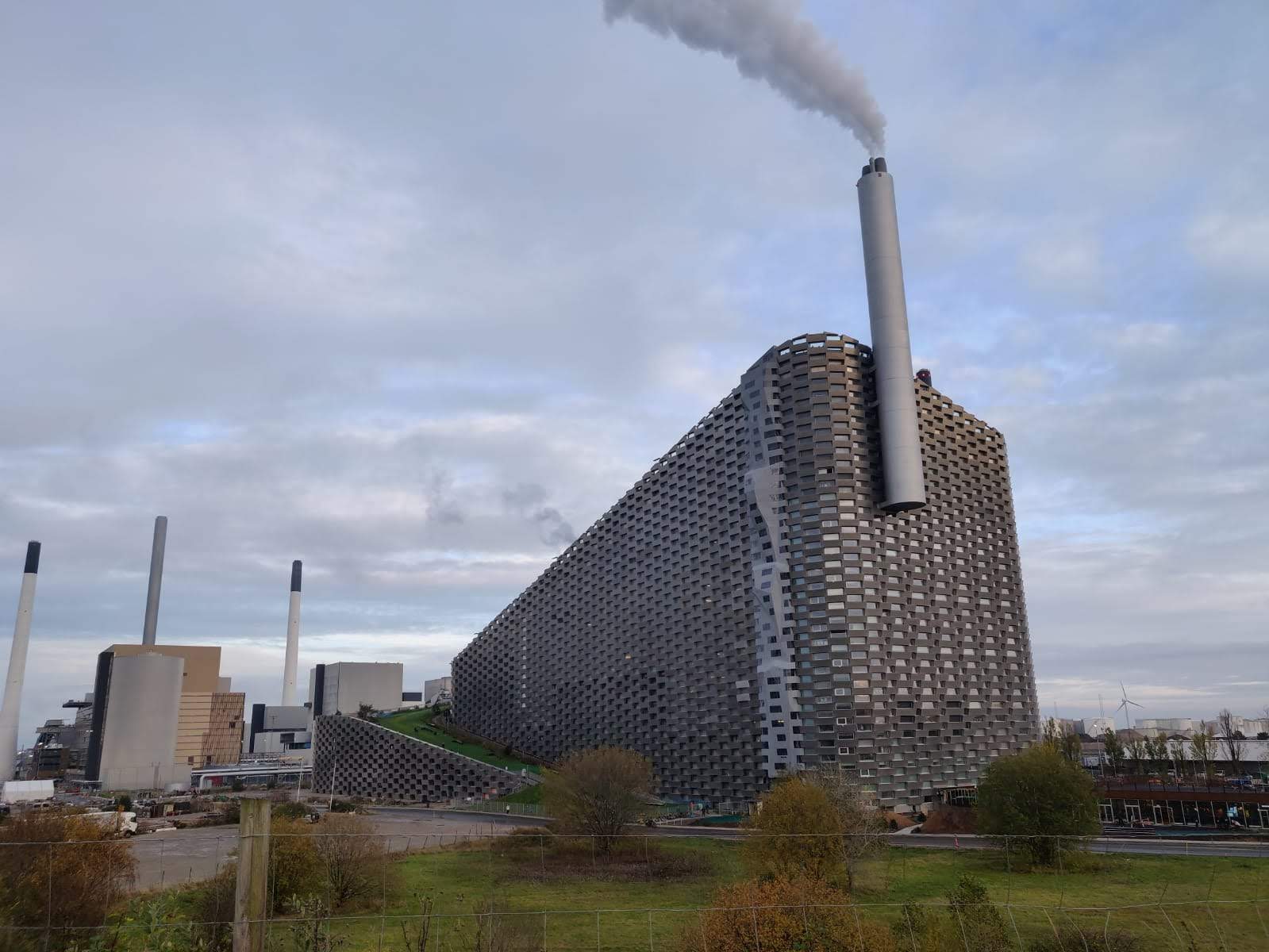
Amager Bakke is a new, modern incineration plant in Copenhagen. It is also a lesson on questionable decision-making processes, poor project planning and economic and environmental failures.
The new incinerator promises
The history of the new incineration plant located in northeastern Amager goes back to 2009 (1). The five municipalities that owned the 40-year old Amager incineration plant – Dragør, Frederiksberg, Hvidovre, Copenhagen and Taarnby (2) – undertook to construct a new incinerator with a capacity of 560,000 tonnes per year, at a cost of €534 million (3).
The new incinerator was built on the promise of greater benefits in terms of energy efficiency and the environment. Compared to the 40-year old incinerator it replaced, it was expected to produce 20% more heat and electricity per tonne of waste incinerated, emit less smoke and reduce air pollution by more than 50% per tonne of treated waste. The plant would also be able to burn biomass in case of waste shortages, which would create carbon-neutral energy and heat, as well as making economic sense (4).
The total capacity of the new incineration plant is 560,000 tonnes of waste per year, handled by two furnace lines, each with a capacity of 30-35 tonnes of waste per hour. By comparison, the old plant had four furnace lines, each with a capacity of 15 tonnes of waste per hour, and a combustion permit of 440,000 tonnes of waste per year.
In its efforts to be a sustainable development landmark, the Amager Bakke incinerator changed its name to Amager Resource Center (ARC) and committed to spending another €8 million to explore alternative technologies. To this end, a new waste sorting plant was built next to the incinerator, with space to store household waste and recycling.
But is it really a landmark environmental initiative? One by one, the promises made by supporters of the project have been broken, leaving it a symbol of unfulfilled environmental aspirations of Denmark, which may see its climate and energy targets compromised for decades to come.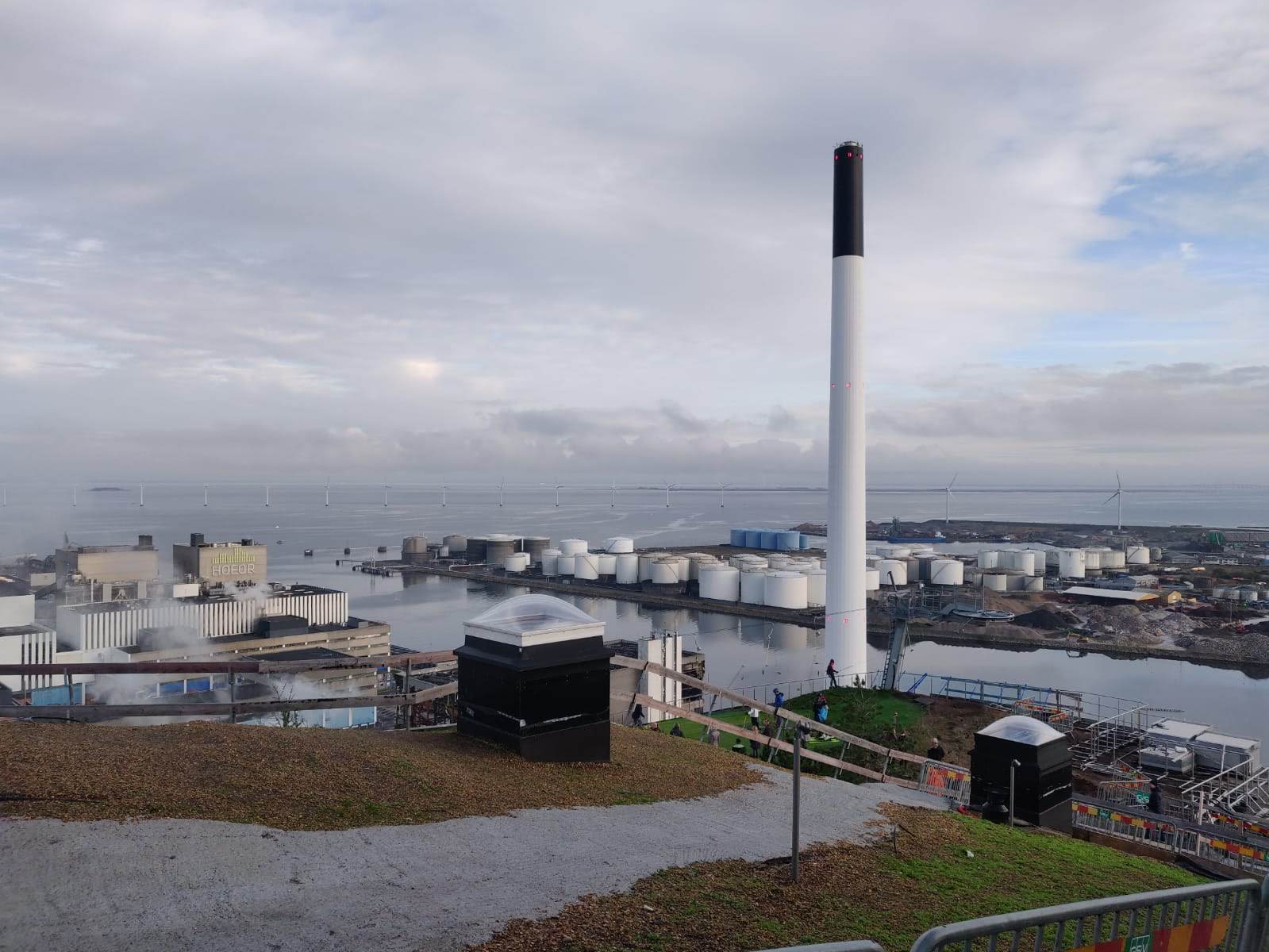
A controversial background
The Amager incinerator has been controversial since its inception, with its financial model proving particularly contentious.
In January 2012, the Amager Bakke incinerator project was refused a loan guarantee of €534 million from the municipality of Copenhagen. Instead of building a large incineration plant, the municipality wanted a plant with a smaller capacity and greater focus on recycling and reuse. The city was particularly concerned that the construction of a large incinerator could send a signal to the general population that burning otherwise recyclable materials is acceptable (alongside the other complications inherent in an oversized incinerator) (5).
Despite approval by three of the five municipalities (6), the municipality of Copenhagen requested another tender, featuring a smaller furnace. This was rejected by the Board of Amager Bakke on the grounds that it was not economically viable. This argument was questionable, given that the project almost closed, due to poor finances.
During the summer of 2012, a series of secret negotiations saw the municipality of Copenhagen decided to approve the plans, with minor changes. This was despite the fact that the new project would lock-in the municipality’s treatment of waste for incineration for 30-40 years and undermine its climate plan (7). There were also problems with the cost of the plant, which would be significantly higher than other similar projects in Denmark (8). In addition, it was agreed that the plant could not import waste for the incinerator.
A top-down decision
Why the turnaround in the position of the City Council of Copenhagen? Danish newspaper Finans (9) suggests that responsibility lies with then Finance Minister, Bjarne Corydon, whose Social Democrats were the ruling party in Denmark in 2012. Although it is unusual for ministers to involve themselves in local projects, Corydon’s constituency is the city of Esbjerg, where Babcock & Wilcox Vølund – the company supplying the furnace for the incinerator – are based. It was his active involvement in the case that saw the municipality of Copenhagen (which is historically held by the Social Democrats) change its mind. His interference meant that the project was approved and they (Babcock & Wilcox) avoided a potential €0.5 billion loss, despite the fact that the business case was not viable (10).
Current problems
The new incineration plant was duly built and started operating in 2017 (11). Despite being billed as state-of-the-art incineration technology, the decision-making process overlooked several key issues, which have since become problems for the plant.
Firstly, the plant is too large. To function at full capacity would require the use of imported waste, which was initially prohibited. However, in 2016, the five municipalities that own Amager Bakke changed the original agreement to allow imported waste, in a bid to make the project economically viable (12). The original estimated amounts of waste were too low, while decreasing waste volumes would have seen the plant bankrupt after a few years. The municipalities were forced to adjust the forecasted 480,000 to 350,000 tonnes of waste annually, despite the maximum capacity of the incineration plant being 560,000 tonnes. Now, not only does the plant allow imported waste, it also allows the burning of biomass to meet its huge demand, again contrary to the original agreement (13).
 In 2018 alone, it burned approximately 30,000 tonnes of waste, primarily from the British Islands (15). Supporters of the plant have continued to justify the environmental benefits of importing waste yet it is clear that their lifecycle arguments are not borne out, as the waste imported is dry paper, plastic, cardboard and between 15-40% plastic, all of which are recyclable. Ea Energy Analysis similarly points to the lack of environmental benefits, with its report showing that the carbon footprint increases where special attention is not paid to reducing plastic in the waste (16). This is because the raw material in plastic is crude oil so when we burn plastic, we essentially burn fossil carbon, which has a higher CO2 emission rate.
In 2018 alone, it burned approximately 30,000 tonnes of waste, primarily from the British Islands (15). Supporters of the plant have continued to justify the environmental benefits of importing waste yet it is clear that their lifecycle arguments are not borne out, as the waste imported is dry paper, plastic, cardboard and between 15-40% plastic, all of which are recyclable. Ea Energy Analysis similarly points to the lack of environmental benefits, with its report showing that the carbon footprint increases where special attention is not paid to reducing plastic in the waste (16). This is because the raw material in plastic is crude oil so when we burn plastic, we essentially burn fossil carbon, which has a higher CO2 emission rate.
After 10 years of project development, several bailouts and interference from the Finance Minister, the incinerator continues to struggle with both financial and technical issues. In 2016, for example, furnace suppliers Babcock & Wilcox Vølund discovered an error in the furnaces. The ensuing delay created a multi-million euro loss for the company and also for ARC (17).
In 2017, the plant shut down for 14 days, when a design error in the compensator meant it could not handle temperature changes.
In addition to these technical issues, the plant cannot work to full capacity in the summer months, as the resulting over-production (18) would mean that other power plants could not distribute their heat and electricity (and would be forced to close). During the summer, therefore, only a single line is run at Amager Bakke.
To compensate for these financial and technical issues, ARC’s new financing plan foresees taking responsibility for waste collection as a means of generating revenue. This would see ARC take over the management of waste collection from four privately owned companies. As a waste collector, ARC would be contracted by the City of Copenhagen. This comes at a price, however, as ARC will cost €13 million more than the private contractors (19).
The plant is not up to date. Associate Professor Brian Vad Mathiesen from Aalborg Universitet explains that there are significantly better ways to create heat and energy than burning our resources. He notes that a focus on heat pumps, geothermal and solar heat would be substantially more advantageous. The investments that are made in technology today should be connected so the main source of energy comes from wind power, and the productions from unsustainable energy sources should adopted to this production (20).
In conclusion, as a waste incineration project, ARC has been a technical and financial fiasco, characterised from the outset by poor judgment that ignored the advice of experts, and project management that contradicts the municipalities’ own waste management and climate plans. As a result, Copenhagen now has an incinerator plant that is double the size needed and that may need to import more and more foreign waste if it is to keep running. Given that it is financed through a 30-year loan, it is Danish taxpayers that will pay for the price of this waste. NOTE:
- Wittrup, S. Ingenøren, 16 August 2016. Available at: ing.dk/artikel/amager-bakke-faar-alligevel-lov-at-importere-affald-185915
- Amager Resource Centre (2019). Available at: a-r-c.dk/om-arc/organisation
- Wittrup, S. Ingenøren, 16 August 2016. Available at: ing.dk/artikel/amager-bakke-faar-alligevel-lov-at-importere-affald-185915
- Miljøstyrelsen (2012). Amagerforbrænding – Nyt affaldsbehandlingscenter. Miljøstyrelsen.
- Cradlepeople, 14 September 2012. Available at: cradlepeople.dk/ressourcer-op-i-rog/
- Wittrup, S. (2012). Ingenøren. Available at: ing.dk/artikel/amagerforbraending-truer-borgerrepraesentationen-med-oploesning-126063
- Bredsdorff, M. and Wittrup, S. ‘Hemmelige forhandlinger: Amager får sit kæmpe-anlæg til at brænde affald’. Ingenøren, 3 September 2012. Available at: ing.dk/artikel/hemmelige-forhandlinger-amager-faar-sit-kaempe-anlaeg-til-braende-affald-131783 In the first year of its operation, the plant emitted approximately 131,000 tons of CO2, equivalent to annual emissions of over 28,000 passenger cars (European Pollutant Release and Transfer Register (E-PRTR). Available at: prtr.eea.europa.eu/#/facilitylevels).
- Bredsdorff, M. and Wittrup, S. ‘Hemmelige forhandlinger: Amager får sit kæmpe-anlæg til at brænde affald’. Ingenøren, 3 September 2012. Available at: ing.dk/artikel/hemmelige-forhandlinger-amager-faar-sit-kaempe-anlaeg-til-braende-affald-131783
- Martini, J. and Sandøe, N. ‘Finans Corydon kritiseres for lyssky rolle i skandalesagen om Amager Bakke’. Finans, 22 August, 2016. Available at: finans.dk/finans/erhverv/ECE8939419/corydon-kritiseres-for-lyssky-rolle-i-skandalesagen-om-amager-bakke/?ctxref=ext
- Martini, J. and Sandøe, N. Corydon kritiseres for lyssky rolle i skandalesagen om Amager Bakke. Finans, 22 August 2016. Available at: finans.dk/finans/erhverv/ECE8939419/corydon-kritiseres-for-lyssky-rolle-i-skandalesagen-om-amager-bakke/?ctxref=ext
- ARC. Available at: a-r-c.dk/om-arc/presse/amager-bakke
- Wittrup, S. Ingenøren, 10 August 2016. Available at: ing.dk/artikel/amager-bakke-faar-alligevel-lov-at-importere-affald-185915
- Wittrup, S. Ingenøren, 26 August 2015. Available at: ng.dk/artikel/affaldsmangel-truer-amager-bakkes-oekonomi-178234
- Søgaard, J. 10 September 2019. Available at: ctwatch.dk/article11606115.ece
- Wittrup, S. Ingenøren, 12 August 2016. Available at: ing.dk/artikel/miljoeorganisation-affaldsimport-amager-bakke-kan-aldrig-blive-gevinst-klimaet-186002?fbclid=IwAR0zIbgKMfhfMs-KQbhPDPdfYR7sCUUoN8WsgyrnLZUtBmHwZ2UIyfVv4JA
- Ea Energianalyse (2016). El, Varme og affaldsforbrænding – Analyse af økonomi ved import af affald i et langsigtet perspektiv. Available at: ea-energianalyse.dk/reports/1603_el_fjernvarme_affaldsforbraending_import.pdf
- Martini, J. and Sandøe, N. ‘Topchef får sparket efter kæmpetab på prestigeprojektet Amager Bakke’. Finans, 1 January 2017. Available at: finans.dk/finans/erhverv/ECE9330270/topchef-faar-sparket-efter-kaempetab-paa-prestigeprojektet-amager-bakke/?ctxref=ext
- Søgaard, J. 10 September 2019. Available at: ctwatch.dk/article11606115.ece
- Martini, J. and Sandøe, N. Finans, 22 May 2018. Available at: From finans.dk/erhverv/ECE10621182/redningsplanen-er-kuldsejlet-100-skraldebiler-skal-redde-kriseramte-amager-bakke/?ctxref=ext
- Bredsdorff, M. and Wittrup, S. ‘Hemmelige forhandlinger: Amager får sit kæmpe-anlæg til at brænde affald’. Ingenøren, 3 September 2012. Available at: ing.dk/artikel/hemmelige-forhandlinger-amager-faar-sit-kaempe-anlaeg-til-braende-affald-131783
